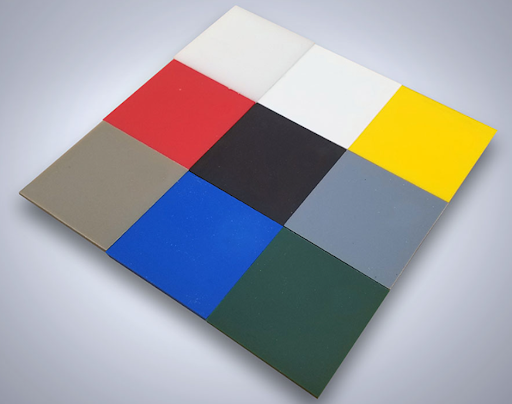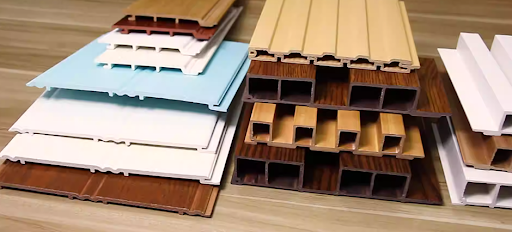
HDPE plastic sheets are the top choices for a variety of production processes
In product packaging applications, piping systems and a number of other technical applications, HDPE plastic sheets material appears with high frequency. This also confirms that HDPE plastic sheets are ranked as one of the top choices for a variety of production processes. The main reason for this position is because HDPE plastic sheets demonstrate a series of outstanding advantages compared to other materials. Typically, some properties such as light weight, good hardness, elasticity, impact resistance, and perfect chemical resistance make them increasingly popular. Understanding the properties and advantages of HDPE plastic sheets will certainly help a lot in choosing materials in the upcoming project. The following shares will help readers update more interesting information about the benefits of HDPE plastic sheets so that every decision becomes extremely accurate.
1. What are HDPE plastic sheets?

HDPE sheets help reduce material wastage in both the production and consumption
One of the three most used types of polyethylene on the market is HDPE sheets, the abbreviation for High Density Polyethylene. This type of plastic belongs to the group of petroleum thermoplastics with a structure consisting of a linear structure where branches grow. This structure makes HDPE durable, hard and dense. A summary of the typical properties of HDPE plastic include high impact resistance, low water absorption, and excellent chemical resistance. HDPE sheets are ranked as the top choice from industrial environments to construction projects and packaging solutions. The reason for this popularity is because HDPE sheets help reduce material wastage in both the production and consumption processes. It is easy to see HDPE sheets delivered as a solid, flat plastic sheet and a number of other compressed shapes because they are easy to frame and shape.
Read more: HDPE (High density polyethylene) - What is it? Properties & common uses
2. The applications of HDPE plastic sheets
Compared to many other plastic lines, HDPE plastic sheets are considered to possess many superior features. HDPE plastic sheets meet applications requiring high durability, good impact resistance, moisture resistance and long-term chemical resistance. Because of the above features, HDPE plastic sheets are not only applied in many products but also in a variety of fields.
2.1 Application in packaging

HDPE plastic sheets become essential in the production of containing bottles
One of the most popular applications of HDPE plastic sheets is in the packaging industry. Some applications include the following:
- Boxes, bottles, jars: thanks to their good anti-corrosion and antibacterial properties, HDPE plastic sheets become essential in the production of cosmetic bottles, shampoos, shower gels, detergents, water bottles, and a variety of food containers.
- Product protection: thanks to its excellent hardness and impact resistance, HDPE plastic sheets are also used to produce containers, pallets, and plastic trays to protect products during transportation and long-term storage.
- Packaging films and bags: Although very stiff, HDPE plastic sheets are easy to shape, even into thin films. This is one of the great applications to produce packaging and protective bags for a variety of products.
2.2 Industrial Application

HDPE plastic sheets can be used in installing complex piping systems
For the technical industry, HDPE plastics sheets demonstrate excellent durability, toughness, and resistance in highly abrasive environments. Some applications include the following:
- Piping: thanks to its hardness and outstanding chemical resistance, HDPE plastic sheets can be used in installing complex piping systems from civil pipes, medical waste pipes, to mining pipes.
- Tanks and protective screens: many applications such as tanks or ponds and lagoons will require the durability of HDPE plastic sheets. This material can withstand good pressure, is easy to install and maintain, thereby maintaining the durability of the project for an ideal period.
- Conveyor components: typical applications such as wear strips, chain guides, and guide rails when using HDPE plastic sheets will create a surface with low friction and significantly reduced wear.
2.3 Construction and installation
A durable material, good weather resistance over many years, flexible, chemical resistant and easy to shape are always the top criteria in the construction industry. Some applications of HDPE plastic sheets can be listed as follows:

HDPE plastic sheets are always the optimal choice for wall panels in buildings
- Wall panels: HDPE plastic sheets are always the optimal choice for wall panels in buildings, apartments, and offices. Wall panels can be easily designed into many designs, reduce weight and are durable over time. Sometimes, HDPE plastic sheets are also used to make insulation panels for roofs, walls, and floors.
- Sewer pipes: due to the flexibility, corrosion resistance and long-term durability of HDPE plastic sheets, they are utilized in the design and installation of consumer water pipes and wastewater of building systems.
- Technical lining: often used in landfills, reservoir partitions and canals to help improve the ability to prevent leakage and contamination between substances.
3. Advantages and disadvantages of HDPE plastic sheets
The extremely diverse applications in many fields of HDPE plastic sheets mentioned above also show the potential of this material. The main reason why the demand for HDPE plastic sheets is increasing today is because of the countless benefits they bring to the manufacturing industry. Some internal benefits can be mentioned as follows:
3.1 Advantages of HDPE plastic sheets

HDPE plastic sheets have flexible recycling capabilities
- Durability over time: the big benefit that HDPE plastic sheets bring to the manufacturing industry is their durability. Regarding the structure, HDPE plastic sheets have a high strength-to-density ratio, which means that they are highly resistant to cracking during both long-term and sudden impacts. The possibility of this material being damaged is estimated to be only half that of other common plastic materials. The durability of this material helps manufacturers maximize the product's functionality. In addition, HDPE plastic sheets also minimize damage during use and limit waste into the environment.
- Environmentally friendly: recycling potential is considered one of the top criteria of today's manufacturing industries. HDPE plastic sheets have flexible recycling capabilities without too much loss of product performance. This minimizes negative impacts on the environment in the current context. Besides, the production process of HDPE plastic sheets is also faster and more energy efficient than other materials, helping to reduce the amount of Carbon released into the air. In some applications, HDPE plastic sheets help prevent toxic waste from spilling into the environment.
- Easy to shape: characteristics of HDPE plastic sheets also include the ease of shaping of thermoplastics. Although the melting point is relatively high, once it reaches a certain melting point, HDPE plastic sheets can be easily molded into any shape as required. Because it is easy to mold and shape, HDPE plastic sheets can be transformed into many products with diverse designs and shapes. They are suitable for a variety of forming processes such as injection molding, extrusion, 3D printing, cutting, deep drawing, routing, welding, riveting, milling and hot and cold forming, helping to expand suitable production methods for manufacturers.
- Resistance: heat resistance and chemical resistance are two extremely necessary factors in production techniques that HDPE plastic sheets can meet. The durability of a material is not only evaluated by its hardness but also by its ability to last over time. HDPE plastic sheets are resistant to external influences such as mold, grease, acid solvents, for long periods of time. The main reason is because they do not tend to absorb other materials.
- Save weight: reducing mass also means minimizing energy and fuel consumption during the operation of the building or equipment system. HDPE plastic sheets always meet the ideal weight to help the project operate gently and smoothly.
3.2 Disadvantages of HDPE plastic sheets

HDPE plastic sheets can be melted at high temperatures beyond their melting point
Besides the great advantages of HDPE plastic sheets, there are also a few limitations that need to be considered for the project. HDPE plastic sheets still have the properties of thermoplastics, so they can still expand or melt at high temperatures beyond their melting point. Some other agents that HDPE plastic sheets cannot withstand are chlorinated hydrocarbons or some oxidizing agents
4. Conclusion
In conclusion, HDPE plastic sheets truly deserve to be known as one of the most potential materials in the manufacturing industry. From the packaging industry, construction and pipeline engineering are all working hard to exploit the outstanding features of HDPE plastic sheets. A material that ensures outstanding hardness, impact resistance, waterproofing and chemical resistance cannot be surpassed by HDPE plastic sheets.
5. About EuroPlas
EuroPlas is always proud to be a reliable plastic supplier for your project. We always have the criterion of providing customers with the most optimal material solution in terms of both quality and cost. EuroPlas provides a diverse range of typical materials such as biofillers, bioplastics, pigments, additives, and filler particles. Meanwhile, visit the EuroPlas blog today! You can find countless useful shares about materials knowledge that are always updated with the latest and most reliable!